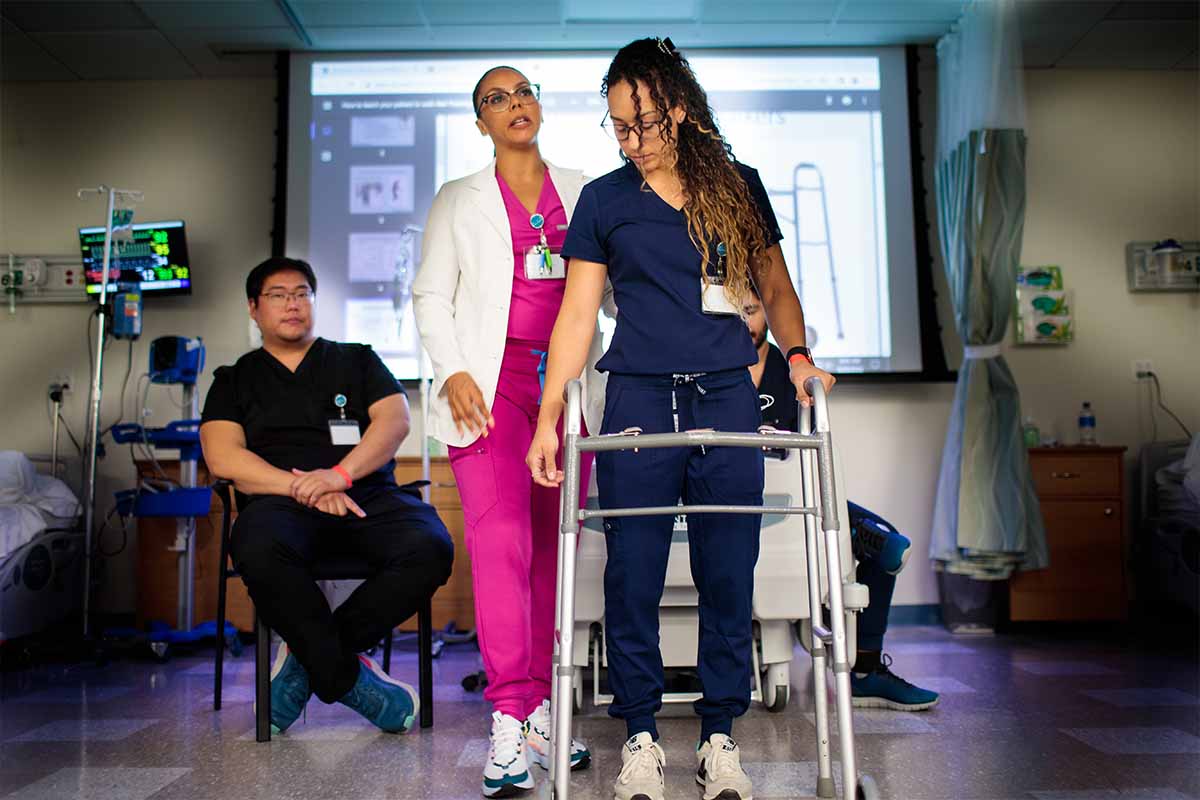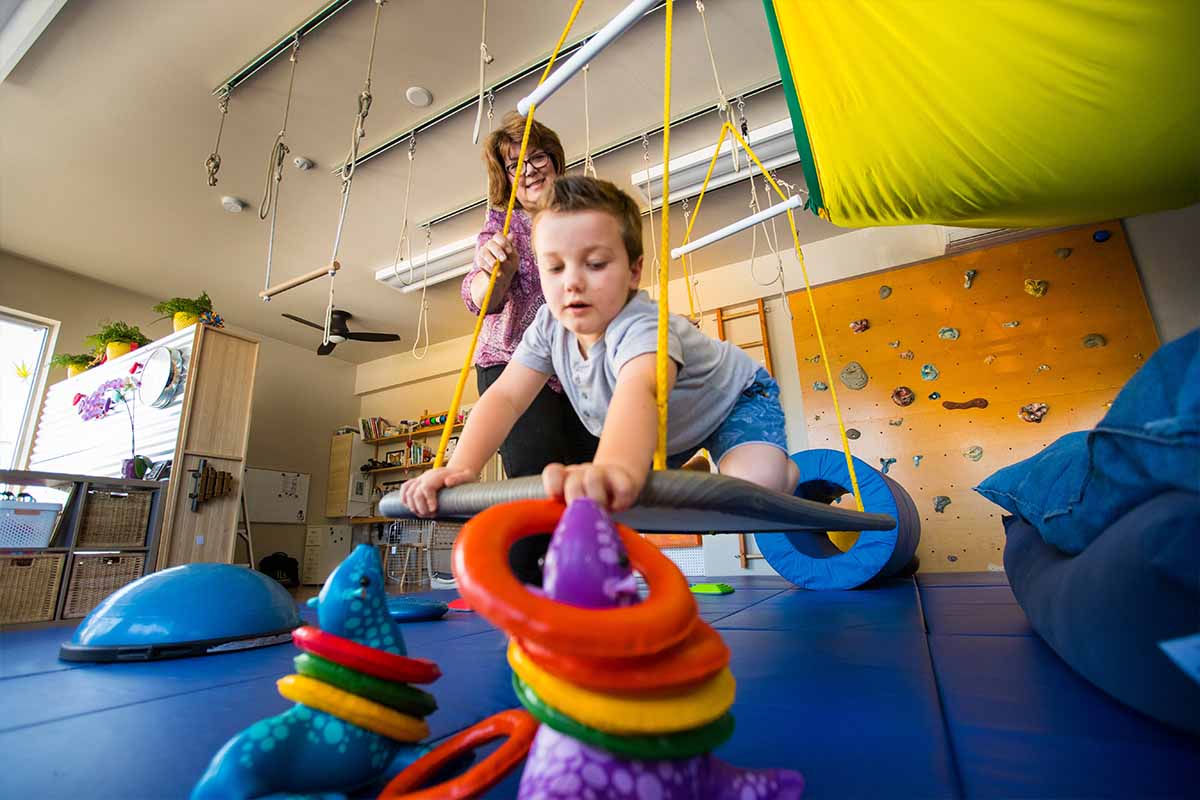
One of the most rewarding aspects of a USAHS education is learning from and working alongside seasoned and passionate faculty. When OT Program Director Marcia Hamilton joined the faculty of USAHS’s Miami campus in 2017, she brought with her more than three decades of experience in occupational therapy clinical practice. Over her career, Dr. Hamilton has specialized in pediatrics, private practice, primary care, subacute care and development of community-based initiatives. Recently her scholarly work has focused on population health and the impact of COVID-19 and recovery efforts.
At USAHS, Dr. Hamilton is deeply involved with the clinical neuroscience curriculum and providing opportunity in the classroom for foundational learning as it applies to occupational therapy practice. Her passion for community-based practice and expanding the breadth and impact of OT services brings great value to both the community and her students in the OT programs.
“There are health disparities and societal needs, now more than ever,” says Dr. Hamilton.
“I am seriously concerned about social and occupational justice, health disparities and barriers to participation in meaningful aspects of life. From a philosophical and foundational standpoint, I know that when I find a person who is experiencing a barrier to participation because of disability, it’s part of the bigger picture — there are other people who have that same problem. In the wake of COVID-19, our recovery efforts require that we look through a lens of addressing risk factors and removing barriers to support overall health and wellbeing.”
This was her thinking behind her award-winning Project Fun, a wheelchair-accessible playground she designed in 2009 to “foster health, wellness and skill development through safe and interactive play.” The Atlantic County, New Jersey, playground she developed was a result of a referral concerning a child with high-level spina bifida, resulting in paralysis. The child was frustrated with the lack of access to the existing playground and was displaying behavioral problems, impacting her health.


“Although the evaluation involved just one child, I knew that what was happening to her was happening to other children too. The existing playground provided limited opportunity for children who had mobility impairments. I made it my aim to think big: from one person to a whole district serving 500 children between the ages of 3 and 21,” says Dr. Hamilton.
Dr. Hamilton has been consulting with a southwest Florida school district interested in replicating the design for its students.
More recently, Dr. Hamilton has turned her attention to helping communities manage the impact of the pandemic, especially the lack of equitable access to resources due to increased poverty and mental health and societal challenges.
“Here in Miami, we’re dealing with housing instability and homelessness as well as health disparities and lack of access. We presently partner with community agencies that serve vulnerable populations. Through the partnerships, students can engage with adults and children through Level I fieldwork. With faculty oversight, we bring occupational therapy strategies and interventions to community-based programs such as Lotus House and The WOW Center,” she says.
“This serves as a great opportunity for the community as well as for the USAHS OT students to broaden the impact of occupational therapy.”


An important area she has been working on pushing forward is OT via telehealth. Like so many people, Dr. Hamilton had a parent in an assisted living facility during the pandemic lockdowns and she became acutely aware of the challenges faced by the elderly population at that time and the resulting loneliness and depression they were feeling. With funding from USAHS, she developed a telehealth system for her mom’s residential facility that connected Dr. Hamilton and her OT students directly with these elderly patients to help them with a range of issues including physical activity, strength, motor control and planning, mental health and social connection. Through developing and implementing this telehealth solution, Dr. Hamilton achieved even more than helping her mom and her fellow residents — it also allowed her to teach her students how to creatively problem-solve and the important skills required to deliver and administer therapy via an internet link. “I like to think of it as bridging the classroom to community through Level I field work and telehealth,” says Dr. Hamilton.


The program itself is free flowing and allows the residents to benefit greatly from what’s offered in terms of OT, in a fun and uplifting way. The university provided an iPad and a connection to interface the activities room with a USAHS classroom, as well as tote bags containing a scarf, journal, book, and ribbon for each resident to use in the therapy sessions.
“Costs were kept low by buying in bulk, and we used technology that already existed at the facility as well as partnered with the activities coordinator who was already on staff,” says Dr. Hamilton.
“It’s really a valuable way to make a strong impact in the lives of people who might not otherwise be able to receive occupation-based intervention without using private insurance”.
Dr. Hamilton describes her work in OT as a decades-long personal journey — one that has allowed her to drive the field of OT forward into previously uncharted territory as new challenges have emerged. Sharing her knowledge and experience with her students and serving vulnerable populations is truly a dream come true.
“I still have a lot of things I need to do, especially around getting more OT into primary care,” she says. “But I also love the leadership aspect of working with the next generation of OTs. I enjoy seeing the OT program at USAHS develop and stabilize. It’s nonstop, but a phenomenal chance to have this opportunity to propel the field forward.”
Ready to launch a rewarding role in occupational therapy? Discover USAHS’ immersive OT programs, and apply today.







